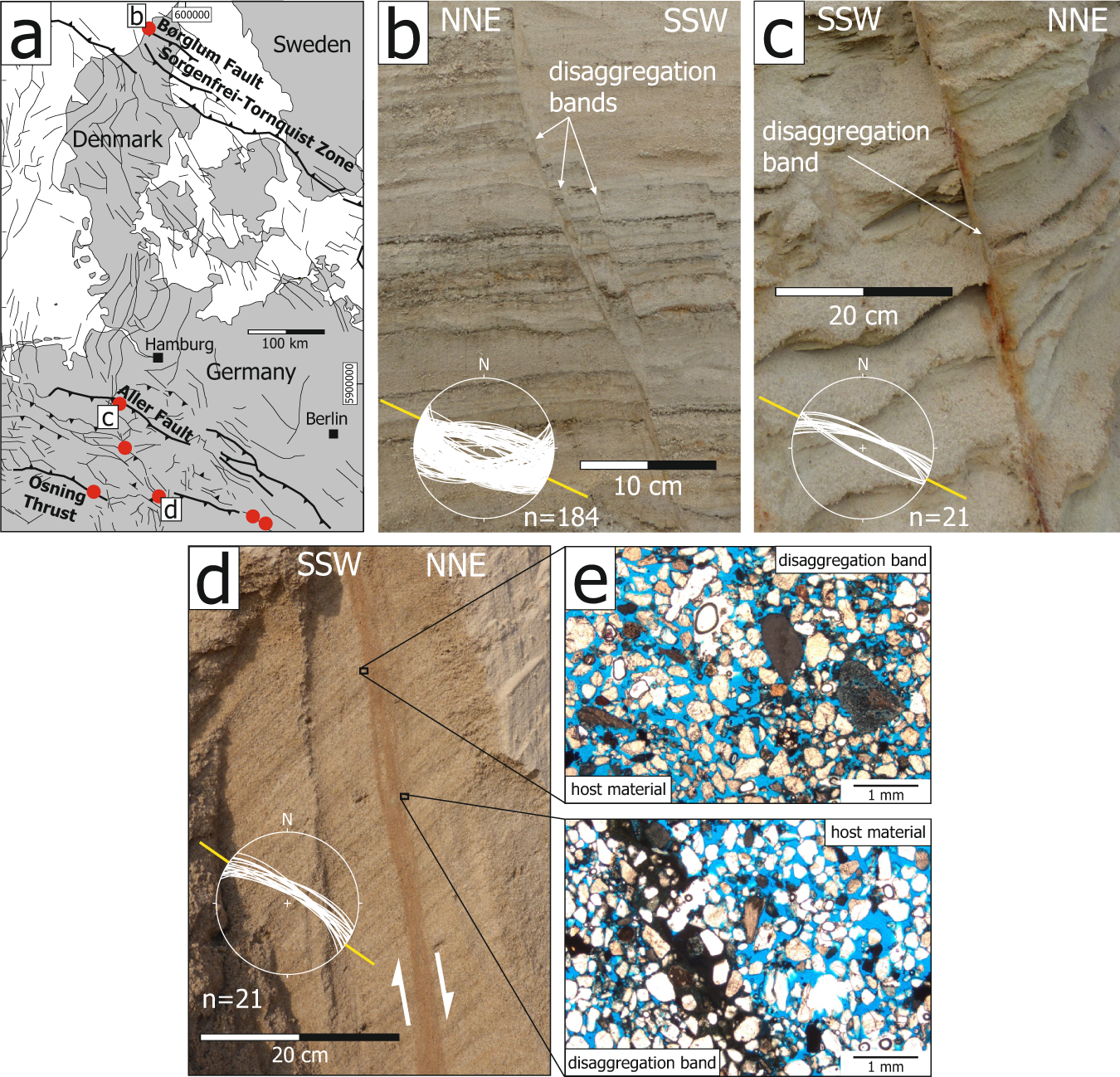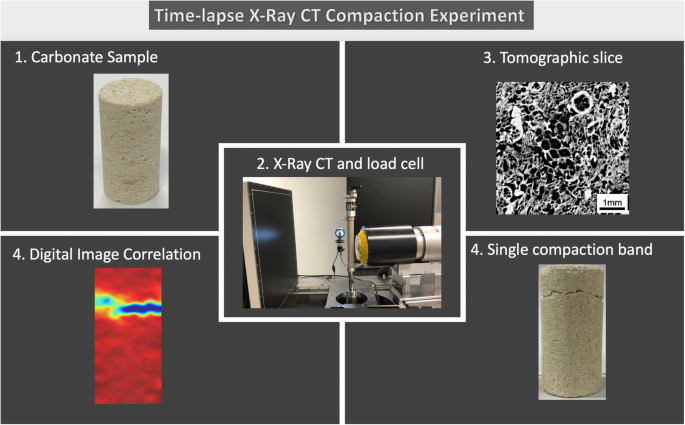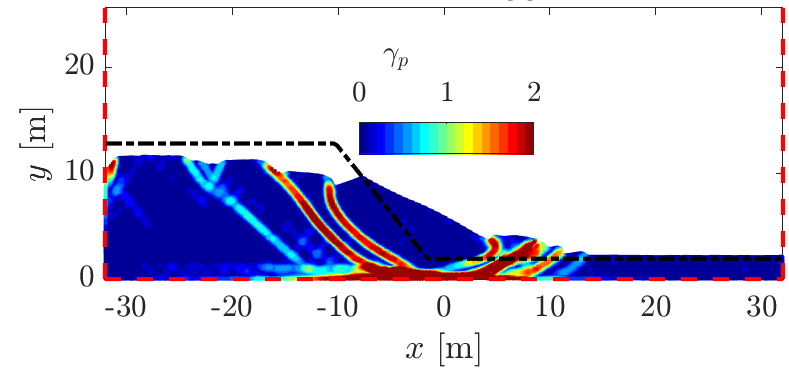WP1
Geological survey on localization
Lead beneficiary: UNIFI
- Subduction zones (Italy & Nepal)
- Slipping zones of landslides (Alp region in Europe)
- Sedimentary strata of storage/geothermal reservoirs (Germany & Kazakhstan)
- Comparisons

WP2
Constitutive models
Lead beneficiary: ENPC
- To advance elastoplastic and hypoplastic constitutive models for strain localization in porous geological media
- To incorporate the new knowledge on multiscale and multiphysics coupling effects gathered in WP1 on localization mechanism into these sound constitutive models;
- To identify the onset conditions of diverse deformation bands in bifurcation analysis of elastoplastic and hypoplastic constitutive models;
- To transfer knowledge from academia to the private sectors by favouring the implementation of sound constitutive models for geological strain localization in the ground into software produced by ITASCA.

WP3
Numerical approaches
Lead beneficiary: CIMNE
- To develop the novel peridynamic and phase-field approaches with advanced elastoplastic and hypoplastic constitutive models obtained from WP2 to simulate the localization phenomena.
- To take the multiscale and multiphysics coupling effects into the developed peridynamic and phase-field approaches for numerical simulations.
- To identify benchmark cases and scenarios of deformation band formation and to compare the numerical.

WP4
Laboratory tests and validation
Lead beneficiary: TUC
- To develop the new acousto-optic-mechanical synergistic techniques for analysing responses of deformation bands formation;
- To gain a deep understanding of multiscale and multiphysics localization mechanisms of different deformation bands and the interaction mechanisms with fracture networks;
- To study multiphysics coupling effects of confining pressures, loading rates, temperature, fluid pressures, and chemical dissolution on the strain localization in granular soils and porous rocks;
- To provide experimental evidence for validation of constitutive modelling and numerical simulations in WP2 and WP3.

WP5
Localization in subduction zones
Lead beneficiary: UOS
- To build large-scale computing architecture for modelling the field-scale brittle-ductile slab weakening and dynamic plate segmentation in subduction zones.
- To uncover the slab damage mechanisms accounting for subduction dichotomy of strong/weaken slabs with the occurrence of segmented seismicity and development of large-offset normal faults;
- To study the effects of Earth’s planetary cooling history on the intermittent subduction with frequent slab break-off episodes based on a series of numerical simulations.

WP6
Localization in landslides
Lead beneficiary: BOKU
- To extend constitutive models and numerical approaches obtained in WP2 & WP3 for modelling landslides in large deformation.
- To identify benchmark cases of ring-shear tests and scenarios of the typical laboratory-scale landslides.
- To deeply study the effects of microstructures and multiphysics on the triggering landslides and debris flows caused by rainfall and climate changes.

WP7
Localization in geological reservoirs
Lead beneficiary: TSNUK
- To apply the robust numerical approaches to simulate interactions between deformation bands and fracture networks in the multiphysics environments.
- To answer key questions on stimulation strategies in CO2 storage and geothermal energy reservoirs.
- To improve the current predictive methods for assessing CO2 storage integrity and geothermal extraction efficiency.
